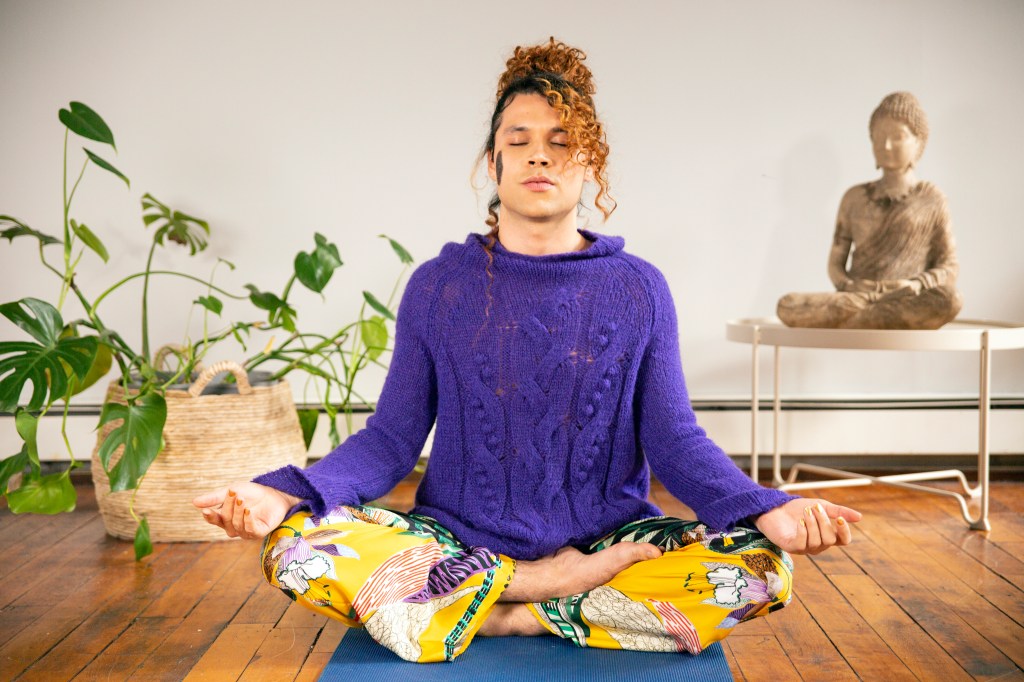
“All told, we were in there about six hours and no, I was not meditating. I just stood there quietly breathing. There were no thoughts in my head whatsoever.”
Ron Swanson – Parks & Recreation
Meditation, like yoga, has a rich history, which extends back to an indiscernible genesis some thousands of years before the common era (B.C.E.). Many folx attribute the practice’s origins to Hinduism, and associate meditation with spirituality. Meditation in many ways, is considered the act of thinking about nothing but stillness and breath, whereas mindfulness is the act of thinking about everything with intentionality.
Mindfulness and meditation are often paired together because they are, to use a tired aphorism, “two sides of the same coin.” Meditation asks the practitioner to focus on nothing, while mindfulness observes everything.
Unlike yoga, mindfulness and meditation have been thoroughly studied by scientists and mental health professionals. Mindfulness-Based Stress Reduction (MBSR) is a secular form of mindfulness used to reduce symptoms of stress, anxiety, and depression. A systematic review (review of all existing research about a particular topic) of MBSR found a positive correlation between the intervention and a reduction of symptoms—especially when paired with traditional talk therapy.
Unfortunately, mindfulness and meditation have major PR problem. While yoga has integrated itself into the fabric of American culture, mindfulness and meditation often seem like spiritual-hippie-crystal-magic. The internet is full of a number of beautiful quotes about the benefits of mindfulness and meditation, but flowery language and religious associations make the practice feel inaccessible.
It’s just breathing, friends.
If Ron Swanson can do it, so can you.

The other problem with mindfulness and meditation has more to do with what people are researching than an inherent fault of the practices themselves. As we mentioned in the Research tab, there are currently no specific evidence-based interventions for reducing or mitigating symptoms of suicidality among LGBTQIA+ youth. As of this writing, there have been zero studies published about variations of gender dysphoria or intervention strategies to help trans and gender non-conforming (GNC) people cope.
Our personal experience reinforces the benefits of MBSR. The research is right: mindfulness and meditation make trans and GNC folx feel less dysphoric. The mind-body connection (read more in the Mind-Body Connection tab) is a real thing, and starting a habitual practice of mindfulness and meditation prior to a gender-related freak out will help with coping when a dysphoric episode does happen.
There are a lot of wonderful resources available for starting a mindfulness and meditation practice. Calm, Headspace, and Insight Timer are wonderful apps for accessing guided meditations, meditation timers, and sleep-stories, all with varying levels of cost-effectiveness. YouTube has a plethora of free mindfulness and meditation videos, some of which our team has personally used during dysphoric episodes. If you want to read about meditation and mindfulness before giving them the old college try, 10% Happier and The Power of Now are two of our favorite books about the topic.
Most importantly, remember to breathe.
